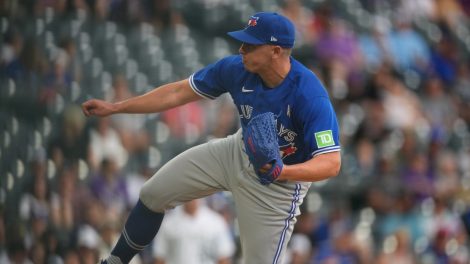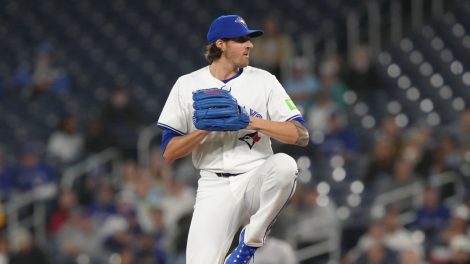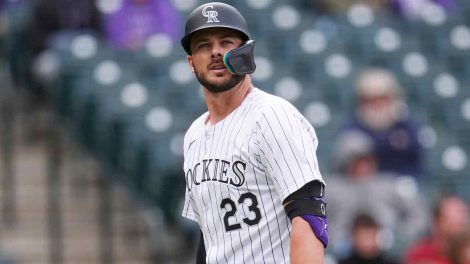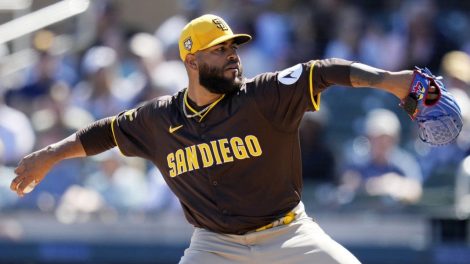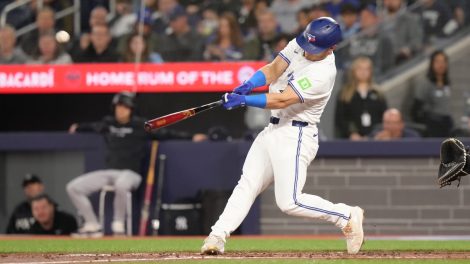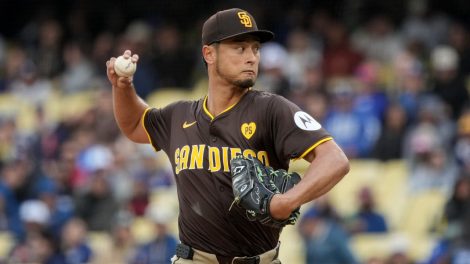TORONTO – After months of slow-moving negotiations between baseball’s players and owners, there’s finally a path ahead toward a 2020 MLB season.
On Monday night, MLB owners voted to put in motion plans for a shortened 60-game season and at long last, a painful back and forth ended without a negotiated agreement. Now, the focus will shift from the bargaining table to the field — pandemic permitting, that is.
For a sport that’s generated headlines for the wrong reasons of late, that’s a good thing. But it’s not quite so simple, either. The recent talks between players and owners will have lasting fallout, and there are still countless logistical questions to be answered as baseball’s return to play plans take shape.
At this point, many of these pressing questions don’t have answers. So in the absence of clarity, let’s start by simply identifying some of the many decisions approaching in the coming days and months…
[snippet id=3305549]
What’s next?
The league has asked players for answers to two questions by 5 p.m. ET Tuesday:
1. Are players able to report to camp within seven days?
2. Do players agree with the owners on health and safety protocols?
Given that players have consistently pushed for more games, it stands to reason that they’ll be willing to report within a week. If and when MLB gets clarity on that front, schedule-makers can start planning for the shortest season in baseball history. Then, we’ll see a 60-game sprint to the finish this summer.
The health and safety questions are far more complex, but if players approve the suggested protocols, they’ll be expected in spring training on July 1 with regular season games beginning later in the month.
Where will teams hold spring training?
For 29 teams, the answer to this question seems relatively simple. The rise of COVID-19 cases in Florida and Arizona coupled with the arrival of warm summer weather means every American team can prepare for the season from their home stadiums.
For the Blue Jays, it’s not so simple. While they’d prefer to play their regular season home games in Toronto this year, the federal government has restrictions in place due to the pandemic, and non-essential travel is not permitted between Canada and the U.S. until July 21 at the earliest.
In theory, an exemption of some kind could allow the Blue Jays to train out of Rogers Centre, but that would require swift government action since players will likely be due to report to spring training next week.
Alternatively, the Blue Jays could return to Dunedin, Fla. and resume their preparation there, but their spring facility closed last week after a player showed symptoms consistent with the virus. At this point, it’s unclear how soon the facility will be safe again. In the meantime, the Blue Jays are believed to be working through their options with no clear answer yet established.
Either way, they’ll have to make a decision soon so players can book flights and find accommodations.
Who plays whom?
While nothing can be finalized until players sign off on a start date, Marc Topkin of the Tampa Bay Times reported Monday that MLB plans to limit travel by having teams play within their own divisions and the corresponding geographic division in the other league.
For the Blue Jays, that would mean games against the AL East (Yankees, Red Sox, Rays and Orioles) and NL East (Braves, Phillies, Nationals, Mets, Marlins).
What about expanded playoffs?
Expanded playoffs have long intrigued MLB decision makers, and they became especially intriguing once the pandemic led to dramatic drops in revenue across the sport. With that in mind, the final proposal MLB made to the players included an expanded playoff field of eight teams per league.
But the players rejected that proposal Monday night and once the owners went ahead without a negotiated agreement, the playoff field locked in at five per league for 2020. At some point that topic will likely resurface with owners pushing for more October qualifiers and players using that possibility as leverage for concessions of their own.
How does this impact the 2021 CBA negotiations?
Ideally, these talks would have brought the players and owners together ahead of their next negotiation, the collective agreement that expires following the 2020 season.
Instead, the league-mandated season leaves many issues unresolved. Among them…
• When will MLB implement a permanent universal DH? (There may be a universal DH in 2020, but NL pitchers are expected to hit again in 2021)
• When will MLB expand the playoffs?
• What will the draft look like going forward?
• And alongside those issues, there’s the biggest question of all: What do the sport’s economics look like?
Finding common ground on that front would have proved challenging regardless of how these 2020 talks unfolded. After months of leaks and public name-calling ended in failed negotiations, the challenge of dividing the sport’s revenue may be more daunting than ever.
[snippet id=4722869]
Can the players still file a grievance?
As negotiations unfolded in recent weeks, MLB asked players to waive the right to file a grievance against the owners for failing to negotiate in good faith only to have players decline. Because MLB’s working to impose a season unilaterally, players still have the right to grieve if they so choose, and in the view of some industry observers that possibility gives the MLBPA leverage.
“That’s worth a lot to them,” one agent said.
In the next year and a half, we’ll find out what players intend to do with it.
Either way, how do they play safely?
Even though plans for a season are now taking shape, the owners and players still face the same issue that led the these negotiations in the first place: the pandemic. As veteran left-hander Brett Anderson tweeted Monday, “What happens when we all get it?”
To avoid that possibility, teams and players will do their best to come up with and implement health and safety practices. But think about how many people are required at the ballpark even on days fans aren’t admitted. Security staff, trainers, kitchen staff, front office executives, cleaners, groundskeepers, umpires and clubhouse attendants will all be in the stadium, too.
And if keeping that environment safe sounds challenging, remember that players will still eat and sleep away from the stadium, where they could come into contact with COVID-19. In places like Florida where the infection rate is high, that’s a real risk. The recent outbreak in Phillies camp makes that much abundantly clear.
If that sounds complicated, it’s because it is. For every question MLB answers this year, a few more will likely be waiting around the corner.
[relatedlinks]



